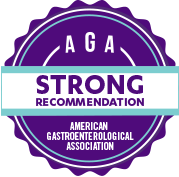STELARA® Resources
STELARA® Videos
Short educational videos to help inform patient care.
| Resources for Your Patient | |
Enroll in the STELARA withMe Program (Downloadable Form) Download the enrollment form for your patients to enroll. | |
Enroll in the STELARA withMe Program (Electronic Form) Online STELARA withMe enrollment form for patients to fill out. | |
| Resources for Your Practice | |
Janssen CarePath Provider Portal The Janssen CarePath Provider Portal gives you 24-hour online access to request and review benefits investigations, request prior authorization support and status monitoring, enroll eligible patients in the STELARA withMe Savings Program, and view Savings Program transactions as requested by the patient. | |
Dosing and Administration Guide A guide containing details on how to prepare and administer STELARA® for both intravenous (IV) infusion and subcutaneous (subQ) maintenance dosing. | |
An overview of our support program. | |
Download a list of specialty distributors authorized to sell STELARA®. | |
Benefits Investigation and Prescription Form Filling out the Benefits Investigation and Prescription Form eliminates the need to write 2 prescriptions and perform 2 separate benefits investigations. |




